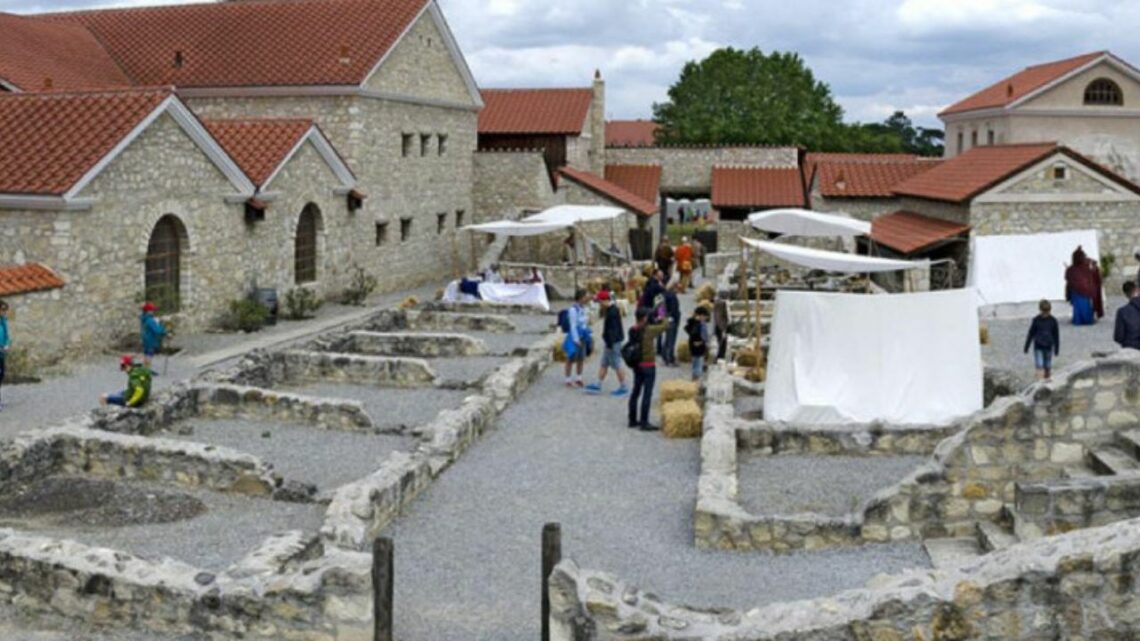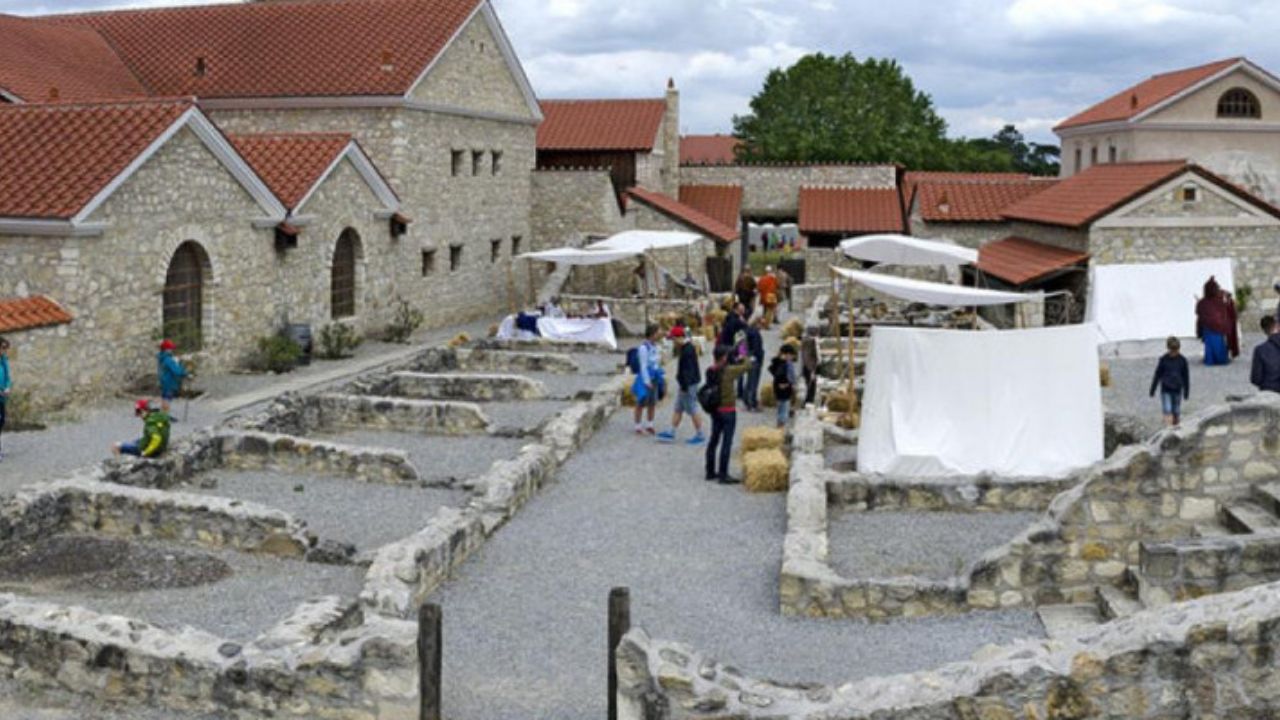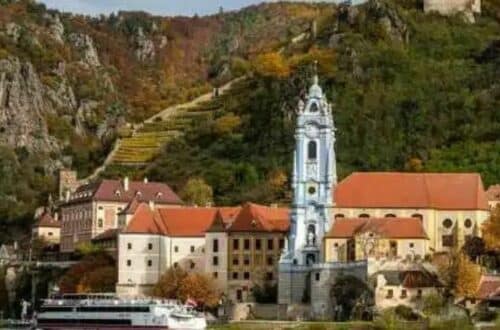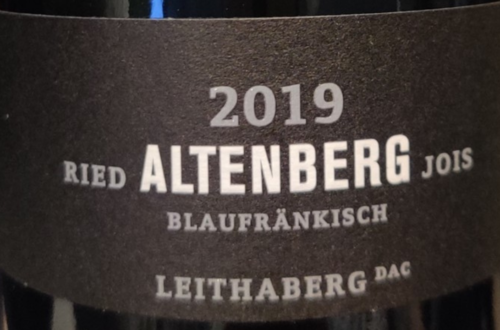
Carnuntum wines
Carnuntum has a rich history dating back to the Roman period. So let’s delve into that first.
It first became significant during the early Julio-Claudian era when it was chosen as a defensive sector and home to Rome’s 15th Legion due to its strategic location along the Danube. Emperor Claudius recognized its potential and established a military camp capable of accommodating 6,000 soldiers. Eventually, Carnuntum became the capital of the province of Upper Pannonia.
In the second century, the city’s importance grew further as the formidable 14th Legion was stationed there. This led to the expansion of a thriving civilian city at Carnuntum, making it one of the largest and most significant Roman cities in the region.
In 308 AD, a crucial conference took place at Carnuntum among the four Emperors of the Tetrarchy. This conference resulted in the proclamation of an end to the persecution of Christians and a universal tolerance of religion throughout the Roman Empire, marking a significant moment in both Roman and world history.
However, as the later Roman Empire faced increasing instability, Carnuntum’s position on the border made it vulnerable to Barbarian Invasions. The city suffered extensive damage during this period and gradually fell into ruin as it was abandoned by its inhabitants.
But let’s get back to the wine part and talk about the wines of Carnuntum!
Carnuntum isn’t your average wine region. Established in 1993, it’s a southern gem nestled near the Danube, just a stone’s throw from Vienna. But ditch the flat plains – Carnuntum hass three distinct landscapes: the majestic Leitha Mountains, the charming Arbesthal Hills, and the rugged Hainburg Mountains. Feeling like a history buff? Explore nearby castles and archaeological sites, or soak up the cool vibes of nearby Bratislava, Slovakia. Now to the vineyards! Planted on diverse terrains with soils rich in sand, loam, loess, and gravel, they create the perfect playground for red grapes like Zweigelt and Blaufränkisch. Don’t forget the iconic Grüner Veltliner for a refreshing white option. In 2019, the region got its DAC status.
Overall presentation of Carnuntum wine region
Carnuntum, a wine region carved out of Donauland in 1993, is located south of the Danube and east of Vienna. The vineyards cover three undulating landscapes: the Leitha Mountains, the Arbesthal Hills, and the Hainburg Mountains.
The proximity to the lovingly reconstructed Marchfeld castles, the attractive archaeological park of Carnuntum, the Danube National Park, and the influence of the Slovakian capital, Bratislava, offer multiple opportunities to introduce visitors to the advantages of Carnuntum wines.
If you like walks and wine, head to wine-growing communities such as Göttlesbrunn, Höflein, or Prellenkirchen, known for their numerous authentic Buschenschank (farm inns).
Terroir of Carnutum : soil and climate
The vineyards in Carnuntum are planted on gently rolling slopes as well as plateaux.
The soils vary, consisting of sand, loam, loess, and gravel, especially at higher elevations.

Between the Leitha Mountains and the Hainburg Mountains, the vineyards are located on two different types of terrain.
On one hand, they are situated on sediments from the Paratethys Sea and the Pannonian Lake. The marine and Pannonian deposits consist of sediments with varying carbonate content, ranging from loose, sandy, and marly or clay-loamy compositions, sometimes with gravel.
On the other hand, in the Arbesthal Hills and the Prellenkirchen region, they are found on glacial terrace gravels corresponding to ancient Danube valley bottoms. The Danube terrace deposits consist of quartz-rich, sandy, and gravelly gravels. All of these deposits are covered by extensive layers of loess, which can be either dolomitic limestone loess or more clayey loess, often devoid of limestone.
In the Hainburg Mountains, the deepest and hidden part consists of granite, which intruded into the existing gneiss and still supports the high-altitude vineyards of Berg. It underlies the Paleozoic carbonate rocks, forming cliffs above Hundsheim and the heights of Mount Spitzerberg.
The region benefits from a similar number of sunshine hours as Burgenland, with the added cooling influences from the Weinviertel hills on the opposite side of the river. However, it does not enjoy the moderating effect of the nearby Neusiedlersee. Carnuntum experiences a variety of microclimates due to its local geography.
Carnuntum grape varieties
With a total of 906 hectares of vineyards on heavy clay and loess soils, as well as sandy and gravelly areas, red wine grape varieties thrive.
The most important and widespread is Zweigelt, followed by Blaufränkisch.
One unique feature of Carnuntum is the Rubin Carnuntum style, which originated in 1992. Initially a blend of Zweigelt and Blaufränkisch, it has now evolved into a pure Zweigelt wine with a minimum alcohol content of 12.5%. These wines are aged for at least six months in barrels and are often best enjoyed when relatively young.
You can get a very good one on WineExpress, from the Artner Weingut!
Concerning white wines, Grüner Veltliner has the first place.
Carnuntum DAC
In 2019, Carnuntum finally obtained DAC status.
In the three categories of Gebietswein, Ortswein, and Riedenwein, the red grape varieties Zweigelt and Blaufränkisch shine, along with Chardonnay, Pinot Blanc, and Grüner Veltliner. The white wines are characterized by their structure and character.
Wineries in Carnuntum
Let me share some of my favourite wineries!
Philippe Grassl is a leading winemaker in the region, known for producing top-quality red wines. One standout is his St Laurent Alte Reben, made from vines that date back to 1961. The 2015 vintage is particularly exceptional according to Stephen Brook
Another prominent winery is Gerhard Markowitsch, one of the three Markowitsch wineries in Göttlesbrunn. Their flagship red wine, Rosenberg, is a blend of 50% Zweigelt, 45% Merlot, and 5% Cabernet Sauvignon, aged in barriques.
Dorli Muhr is passionate about Spitzberg and has produced impressive Syrah wines in 2011 and 2012 (according to Stephen Brook). Their Blaufränkisch is also highly regarded.
Franz and Christine Netzl have created attractive wines, including the popular Rubin. Their range includes a classic 2012 St Laurent “Selection,” an old-vine 2016 Zweigelt from the Haidacker site, and a balanced and elegant 2013 Syrah according to Stephen Brook.
Pitnauer, a winery that has been in operation since 1973, is known for their standout wines such as Zwiegelt “Bienenfresser” (named after the bee-eating bird) and the blend “Franz Joseph.”
Lastly, Trapl, founded in 2000, offers notable wines like the Blaufränkisch Stix Reserve and “Spitzberg,” as well as wines from Prellenkirchen. These wineries showcase the diversity and quality of the wines produced in Carnuntum.
Conclusion : Carnuntum wines
Carnuntum is a vibrant wine region located south of the Danube and east of Vienna. It was established in 1993 and is known for its attractive red wines that combine fruitiness with elegance.
The vineyards in Carnuntum benefit from diverse soils, including sand, loam, loess, and gravel, which contribute to the region’s terroir and microclimates.
The most important grape varieties in Carnuntum are Zweigelt and Blaufrankisch for red wines and Grüner Veltliner for white wines. The region is also known for its unique style called Rubin Carnuntum, a pure Zweigelt wine aged in barrels.
Carnuntum has a growing number of notable wineries, including Philippe Grassl, Gerhard Markowitsch, Dorli Muhr, Franz and Christine Netzl, Pitnauer, and Trapl, each offering their own exceptional wines that showcase the diversity and quality of the region. With its captivating wines and rich cultural heritage, Carnuntum is an exciting destination for wine enthusiasts.







